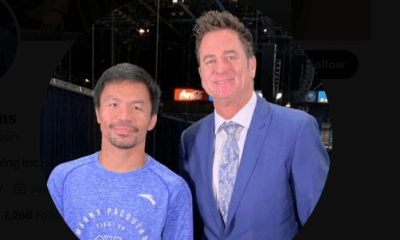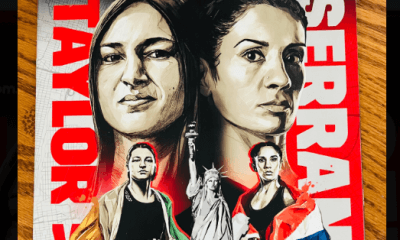Featured Articles
Beware Fearless Freddie
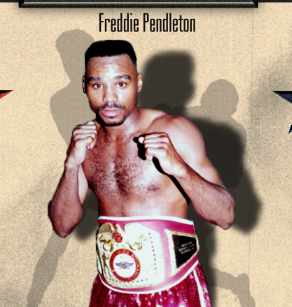
Beware Fearless Freddie
Some fighters launch and sustain long winning streaks; others engage long losing streaks. Some, like Mexican cult legend Quirino Garcia (40-28-4) and the late Saoul Mamby (45-34-6), did both.
And some, like Joey Olivera (21-13-1), Rogers Mtagwa (27-17-2), Manning Galloway (63-19-1) and Emanuel Augustus (38-34-6) mixed things up in spurts. Another, Darnell Boone (24-25-5), is still fighting and is very unpredictable as Andre Ward, Adonis Stevenson, and Sergey Kovalev discovered. When these men are on their game, their opponents can be on the dangerous side of things
For those who like to go back in time, Teddy “Red Top” Davis (71-75-6) provided early TV fans with many shockers as did Holly Mims (68-28-6). The names from back then go on and on.
A favorite was the very active, old schoolish “Fearless” Freddie Pendleton (47-26-6) who fought a remarkable 25 times in Atlantic City but also duked frequently in California and Nevada. And get this, the Philadelphian went in with 17 world champions!
The Record
With only a handful of amateur fights, Freddie lost four of his first six including his debut on November 5, 1981. But he was naturally talented, a combination boxer-puncher with a bazooka for a right hand.
In just his sixth pro fight, he was put in against the very skilled, undefeated and streaking Jerome Coffee and dropped a UD. He then reeled off four quick wins before losing to Gerald Hayes (20-18-4) in October 1982 and to Bobby Johnson (16-0) in March of the following year. After beating one Jose Rodriguez, he stepped up against Anthony Fletcher (13-0 at the time) and lost a 10-rounder but not before decking “Two Guns” in the fifth round, signaling that he could be a dangerous opponent for anyone.
After a draw and three wins in a row, he lost to former world champion Hilmer Kenty by UD at Cobo Hall in Detroit—but many thought Freddie had been stiffed: “That was highway robbery. I beat him from pillar to post…Everybody expected me to get knocked out, and when I beat him up like that, I pissed off a lot of people in Detroit,” he told Anson Wainwright for a story in The Ring magazine.
Two months later in Detroit and again at Cobo Hall, “Fearless” took the fight away from the judges and shocked undefeated Tyrone Trice (12-0) by flooring him three times in the first round for a big TKO. People now knew who Pendleton was and what he was capable of. (As an aside and reflecting the significance of this win, multiple title challenger Trice subsequently won 16 straight.)
“You could see the confidence that he (Trice) was going to just walk in there and destroy me. I expected a tough fight, and then the first shot I caught him with he’s down. I knew I was the outsider, so I went after him and put him away. That was one of the biggest wins early in my career.”
Unlike Trice, however, Freddie lost four of his next seven though against very tough opposition including Adolfo Medal (21-1), Joe Manley (20-2), Frankie Randall (21-0), Jimmy Paul (23-1), and a very slick and underrated Darryl Martin (9-2) whom he beat for a regional title,
In March 1986, Pendleton (14-13 at the time) took on Roger Mayweather (23-3) in Las Vegas and amazingly knocked out Roger in the 6th round with a lightning fast right that put Roger to sleep in frightening fashion.
Freddie then drew with Frankie Randall in July 1086 and also with Livingstone Bramble (24-2-1) almost a year later. Then, amidst a 6-fight win steak, he ambushed and stopped Bramble in a rematch in July 1988. After being KOd by John Montes (38-4) in a slugfest, he extended Pernell Whitaker (20-1) for 12 rounds before losing a close UD with the WBC and IBF world lightweight title belts at stake.
Even though his record was a most deceptive 24-16-3, his reputation was growing fast and it only seemed a matter of time for the big show.
His time was NOW!
Fearless launched a 12-fight undefeated streak after his loss to Whitaker that included a draw with Tracy “Slam Bam” Spann and wins over the likes of Eric Podolak, Felix Dubray, and Spann in a rematch. This later win in January 1993 in Atlantic City earned Freddie the IBF world lightweight title. His record at the time was just 32-17-4.
“Fearless” successfully defended it against the dangerous Jorge Paez (46-6-4) in July 1993 but then lost three controversial fights in a row. The one against Rafael Ruelas (39-1) was especially questionable as Rafael hit the deck twice in the first round. This loss cost Freddie his title, and he would never regain a major belt.
Freddie launched still another win-streak in late 1994 by knocking out Steve Larrimore in the tenth round. He stopped Darryl Tyson (45-6-1) in 1995 and then he outslugged and stopped Tony Lopez (45-5-1) by decking him four times in Las Vegas in what can only be termed an under-the-radar-classic. Lopez (whose level of opposition was equally off the charts) had decked Freddie twice. These were big wins, especially the one against Lopez.
Pendleton would then win some and lose some including three unsuccessful title attempts against Felix Trinidad (28-0), Vince Phillips (37-3), and James Page (24-3).
After stopping one Horatio Garcia (12-3-1) for something called the IBA Americas Welterweight Title, he met Ricky Hatton (25-0) in Manchester, England, on October 27,2001 for the World Boxing Union Super Lightweight title. Freddie was knocked out early by the prime Hatton and that ended his remarkable career.
Freddie Pendleton, now 57 and a trainer, was inducted into the Florida Boxing Hall of Fame in June 2011.
If any fighter lived up to his nickname, it was “Fearless” Freddie Pendleton.
Ted Sares can be reached at tedsares@roadrunner.com
Check out more boxing news on video at The Boxing Channel
To comment on this story in The Fight Forum CLICK HERE
-
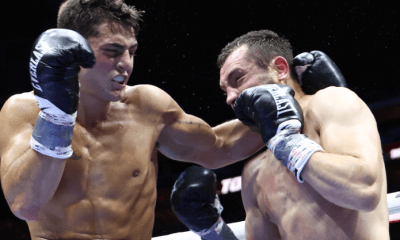
 Featured Articles3 weeks ago
Featured Articles3 weeks agoVito Mielnicki Jr Whitewashes Kamil Gardzielik Before the Home Folks in Newark
-
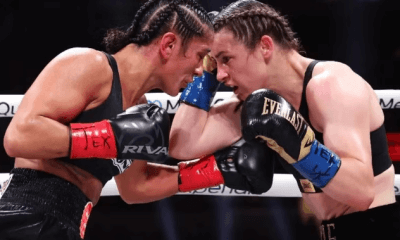
 Featured Articles4 days ago
Featured Articles4 days agoResults and Recaps from New York Where Taylor Edged Serrano Once Again
-

 Featured Articles1 week ago
Featured Articles1 week agoFrom a Sympathetic Figure to a Pariah: The Travails of Julio Cesar Chavez Jr
-
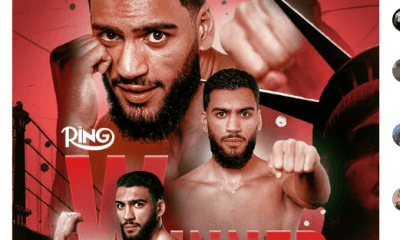
 Featured Articles3 days ago
Featured Articles3 days agoResults and Recaps from NYC where Hamzah Sheeraz was Spectacular
-
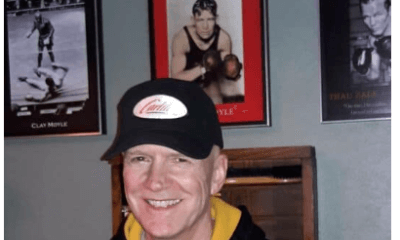
 Featured Articles4 weeks ago
Featured Articles4 weeks agoCatching Up with Clay Moyle Who Talks About His Massive Collection of Boxing Books
-
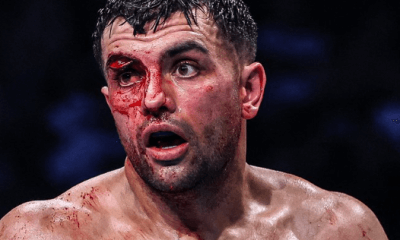
 Featured Articles1 week ago
Featured Articles1 week agoCatterall vs Eubank Ends Prematurely; Catterall Wins a Technical Decision
-
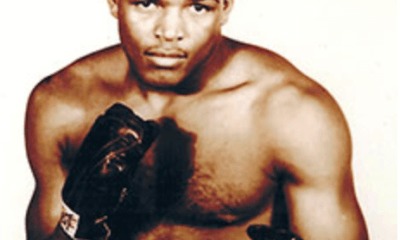
 Featured Articles4 days ago
Featured Articles4 days agoPhiladelphia Welterweight Gil Turner, a Phenom, Now Rests in an Unmarked Grave
-
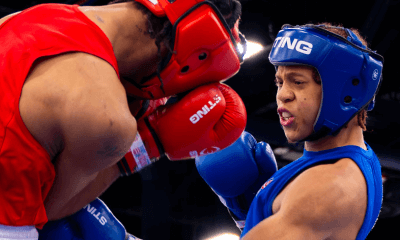
 Featured Articles3 weeks ago
Featured Articles3 weeks agoMore Medals for Hawaii’s Patricio Family at the USA Boxing Summer Festival

